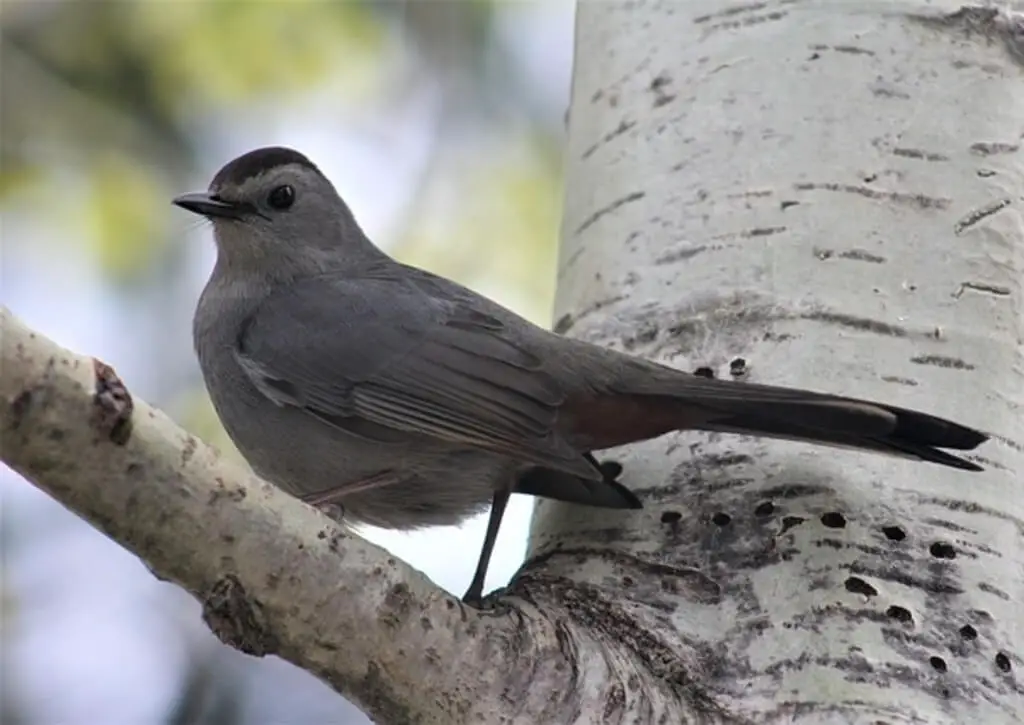Birch trees are one of the most popular tree species for birdwatching. Birch trees provide a variety of food, nesting sites, and shelter for birds. In this article, we will explore 12 of the most common birds attracted to birch trees, with photos, ID and information about each one.
Table of Contents
Birds Attracted To Birch Trees
American Goldfinch
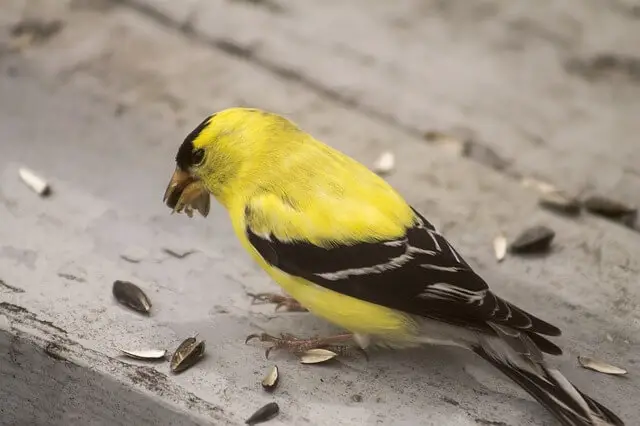
The American Goldfinch (Spis tristis) is a small bird that is found in Canada, the United States, and Mexico. They live in a variety of habitats, including fields, gardens, orchards, and woodlands.
The diet of the American Goldfinch consists mostly of seeds, but they will also eat insects and fruit. These birds are attracted to birch trees, where they feed on the sap and eat the seeds that fall from the tree.
Related Post:
- 9 Birds That Look Like Goldfinches (Explained)
- Interesting American Goldfinch Facts You Need to Know!
Black-Capped Chickadee
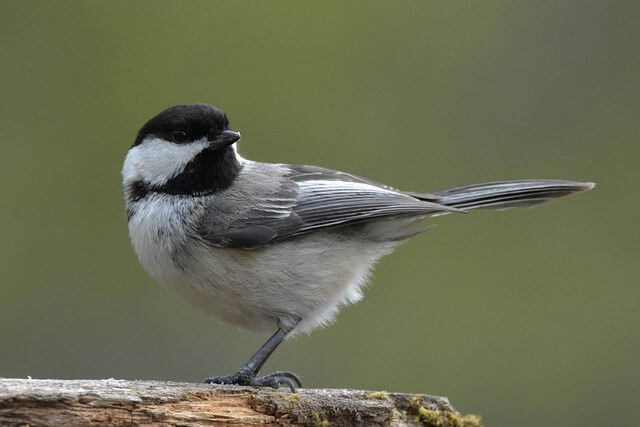
The Black-Capped Chickadee is a small North American bird that ranges from central Canada to northern Mexico. They are common in woodlands and forests, but can also be found in parks and gardens. These birds are well known for their intelligence and friendly demeanor.
Black-Capped Chickadees eat a variety of things, but mostly insects, seeds, and berries. They can be attracted to birch trees as they provide food in the form of sap, insects, and berries. Chickadees are also attracted to bird feeders, where they will eat seeds or suet.
Related Post:
- Unique Black-Capped Chickadee Facts You Need To Know!
- How Do I Attract Chickadees To My Yard (Expert Tips)
- Best Bird Feeder For Chickadees (The Ultimate Guide 2022)
- 11 Small Birds With A Black Mask (with Photos & Details)
Blue Jay

Blue Jays are common in eastern North America. They live in a variety of habitats, including forests, parks, and yards. Blue Jays range throughout most of the eastern United States and southern Canada. They are not typically found in the deep woods, but prefer areas with scattered trees and large open spaces.
Blue Jays mostly eat insects, but also consume seeds, fruit, and nuts. They are attracted to birch trees because the sap leaks from the tree’s injuries attract bugs. The blue jays will fly from branch to branch looking for food.
Related Post:
- 15 Best Bird Feeders For Blue Jays (Tried & Tested 2022)
- What Attracts Blue Jays to your Yard?(Expert Tips)
- Do Blue Jays Migrate? The Truth
- What Does A Blue Jay Eat? (10 Favorite Foods Revealed!)
Red Crossbill
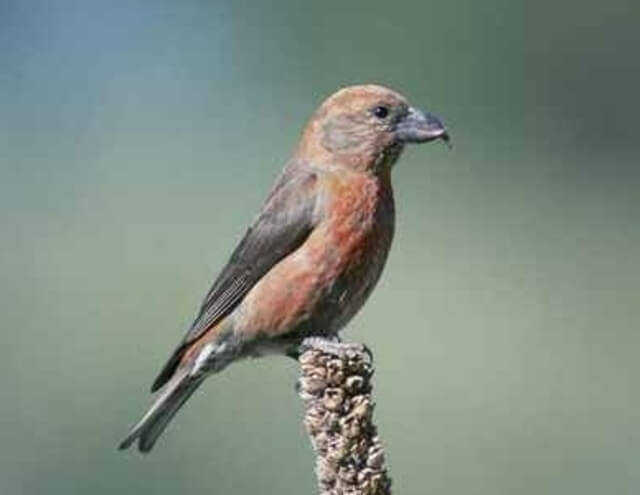
The Red Crossbill (Loxia curvirostra) is a passerine bird that is found in North America, Europe, and Asia. These birds are around 5.5 – 8.0″ inches in length and have a wingspan of around 10-10.5″ inches. The Red Crossbill’s diet consists mainly of seeds, but they will also eat insects and fruit.
They are attracted to birch trees because the seeds inside the cones are easy to extract. The Red Crossbill’s range extends from Alaska in the north to Mexico in the south, and from Scandinavia in the west to Japan in the east. They live in a variety of habitats including coniferous forests, deciduous forests, and even urban areas.
Dark-Eyed Junco
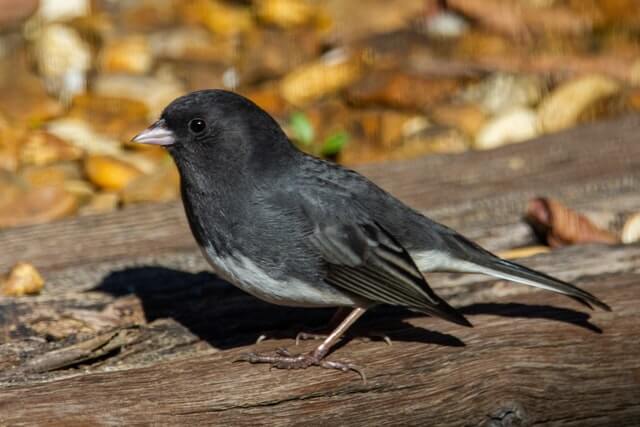
The dark-eyed junco is a small songbird that can be found in North America. They are around 6.5″ inches in length and have a wingspan of approximately 10″ inches. The males are dark gray, and the females have a brown body, and both sexes have a white belly. Their habitat is commonly found in the forests of the northern United States and Canada, but can also be found in the mountains of the west and in parts of Mexico.
Dark-Eyed Juncos are omnivores and eat a variety of things, including insects, seeds, berries, and other fruits. They prefer to eat insects during the summer months, when they can be found foraging on the ground or in trees. During the winter months, they tend to mostly eat berries and seeds. Dark-Eyed Juncos are attracted to birch trees because they eat the insects that live on the trees.
Related Post:
Eastern Towhee
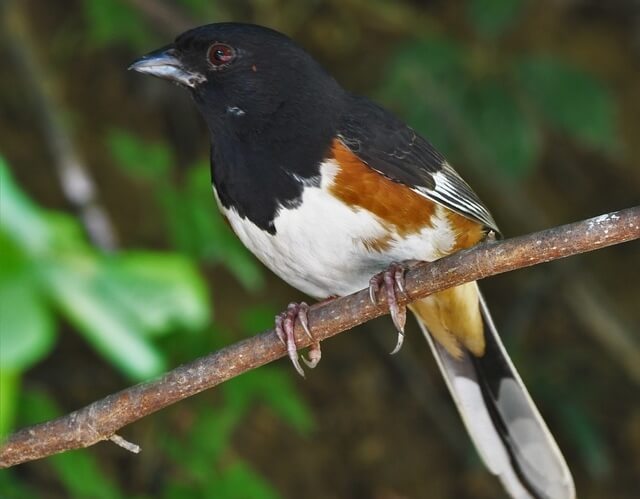
Eastern Towhees are widespread and common birds in eastern North America. They are attracted to birch trees for the sap that oozes from the bark. The sap is a rich source of sugar and amino acids, and the birds will peck at the bark to extract it. Towhees also eat insects, seeds, and fruit.
They are ground-dwelling birds, and their diet reflects that; they prefer to forage on the ground for invertebrates and seeds. They build their nests on the ground as well, in dense vegetation or among fallen leaves. Eastern Towhees are year-round residents in most of their range, but some populations in the southern United States migrate south in winter.
Related Post: How to Attract Towhee to your Backyard? Expert Tips!
Northern Cardinal
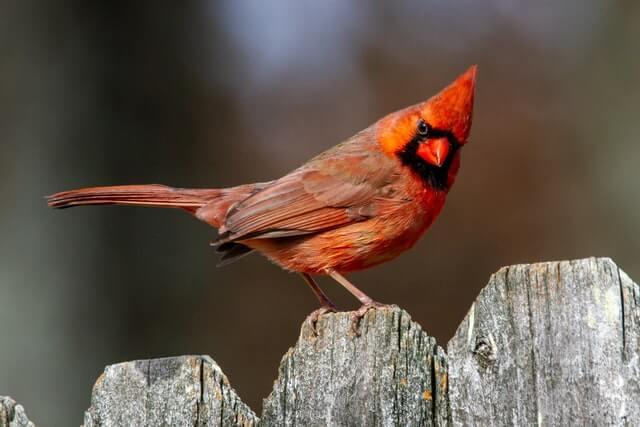
Northern Cardinals are a common sight in much of the eastern United States, where they inhabit a variety of habitats, including woodlands, gardens, and scrubland. These birds are attracted to birch trees for several reasons. Firstly, the sap from birch trees is a rich source of food for Northern Cardinals.
In addition, the bark and leaves of birch trees provide shelter and protection from predators. Finally, the bright red coloration of Northern Cardinals makes them highly visible to potential mates, and the presence of birch trees in their territory indicates a healthy and fertile habitat.
Related Post:
- Where Are Cardinals Found? Best Spots to Look!
- 11 Birds That Look Like Cardinals (with Photos and Info)
- 10 Best Bird Feeders for Cardinals (Rated for 2022)
- Best Birdhouse for Cardinals 2022 (Tested And Rated)
Pine Siskin
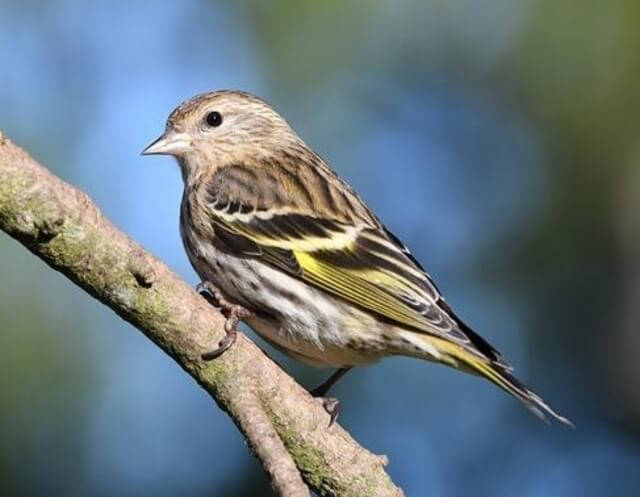
The Pine Siskin is a small North American songbird that is not typically found in the birch forests of the northeast, but they are inexplicably drawn to them. They range across most of Canada and the United States, but prefer open areas with dense vegetation and plenty of trees. In winter, they mostly eat seeds from conifers, but they will also consume fruits, insects, and some nectar.
What draws these birds to the birch forests is unknown, but it could be related to the high density of sap feeding insects that live on birch trees. The sap feeding insects are an important source of food for pine siskins during winter months, so it’s possible that they are attracted to the birch trees for that reason.
Purple Finch

The purple finch (Carpodacus purpureus) is a small passerine bird that is found in North America. These birds are typically about 5.9″ inches long, and have a wingspan of about 9.8″ inches. The purple finch is a seed-eating bird and can be found in open woodlands, deciduous forests, and suburban areas.
These birds are attracted to birch trees and will often forage for food in these trees. The diet of the purple finch consists mostly of seeds, but they will also eat insects and other small invertebrates. The habitat of the purple finch is typically open woodlands or deciduous forests, where there are plenty of trees that they can forage in for food.
Related Post: 9 Best Birdhouse for Finches? (Rated & Tested for 2022)
Tufted Titmouse
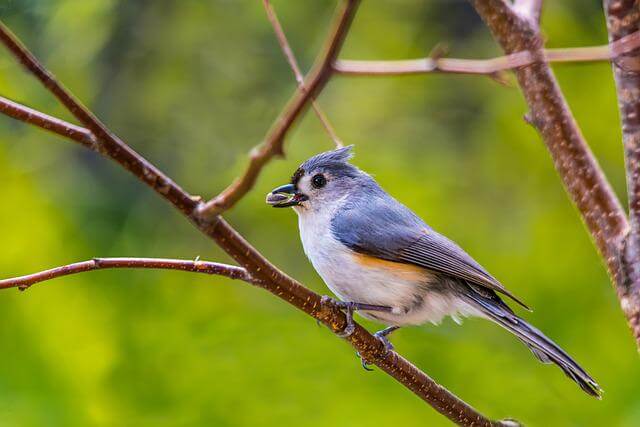
The Tufted Titmouse is a small North American bird that is approximately 6″ to 7″ inches long. They have a stout body, a short tail, and a characteristic crest of feathers on their heads. These birds are omnivorous, eating insects, nuts, seeds, and fruit. They are attracted to the buds and sap of birch trees.
The Tufted Titmouse has a wide range in the U.S., occurring in most states east of the Rocky Mountains. They’re also located in Canada and some areas of Mexico. These birds can be found in a variety of habitats including forests, woodlands, scrublands, and urban areas.
Related Post: How to Attract Tufted Titmouse to my Yard? (Explained)
White-Breasted Nuthatch
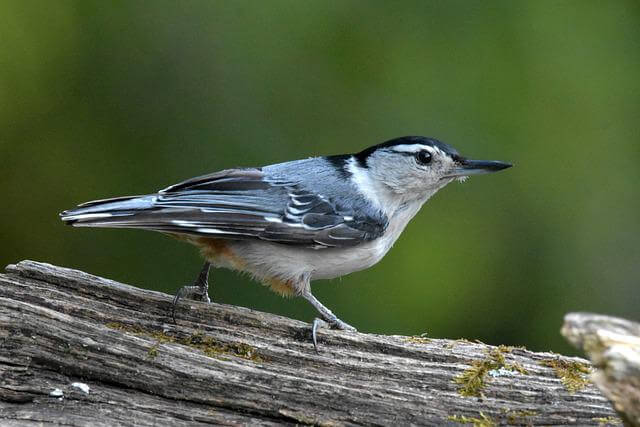
White-breasted Nuthatches are a small songbird that can be found in eastern North America. They have a range that extends from Nova Scotia, down to Florida, and west to Texas. These birds primarily live in deciduous forests, but can also be found in mixed forests, and even pine forests. White-breasted Nuthatches are omnivorous, and eat a variety of things including insects, seeds, nuts, and fruit.
One of the things that makes these birds unique is that they often climb down trees head first. This is likely because they like to eat insects that are hidden in the crevices of tree bark. White-breasted Nuthatches are also attracted to birch trees, likely because the sap attracts insects.
Related Post: How to Attract Nuthatches to your Backyard? Expert Tips!
Yellow-Bellied Sapsucker
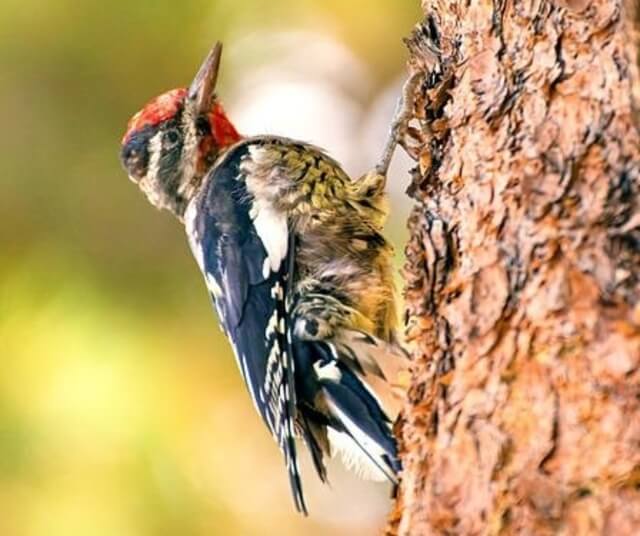
The yellow-bellied sapsucker is a North American woodpecker that ranges from southern Alaska to northern Mexico. It is the only woodpecker that feeds mainly on sap, although it also eats insects and fruit. The sapsucker drills sap wells in trees with its chisel-like bill, and then laps up the sap with its long tongue.
It is most attracted to birch trees, but also feeds on other hardwoods such as maple and oak. The sapsucker’s diet is relatively high in sugar, which makes it a target for predators such as hawks and owls. Its habitat includes forests, wooded suburbs, and parks.
Related Post: 16 Interesting Sapsucker Facts Revealed!
Related Post: 19 Birds Attracted To Maple Trees (Photos, ID & Info!)

